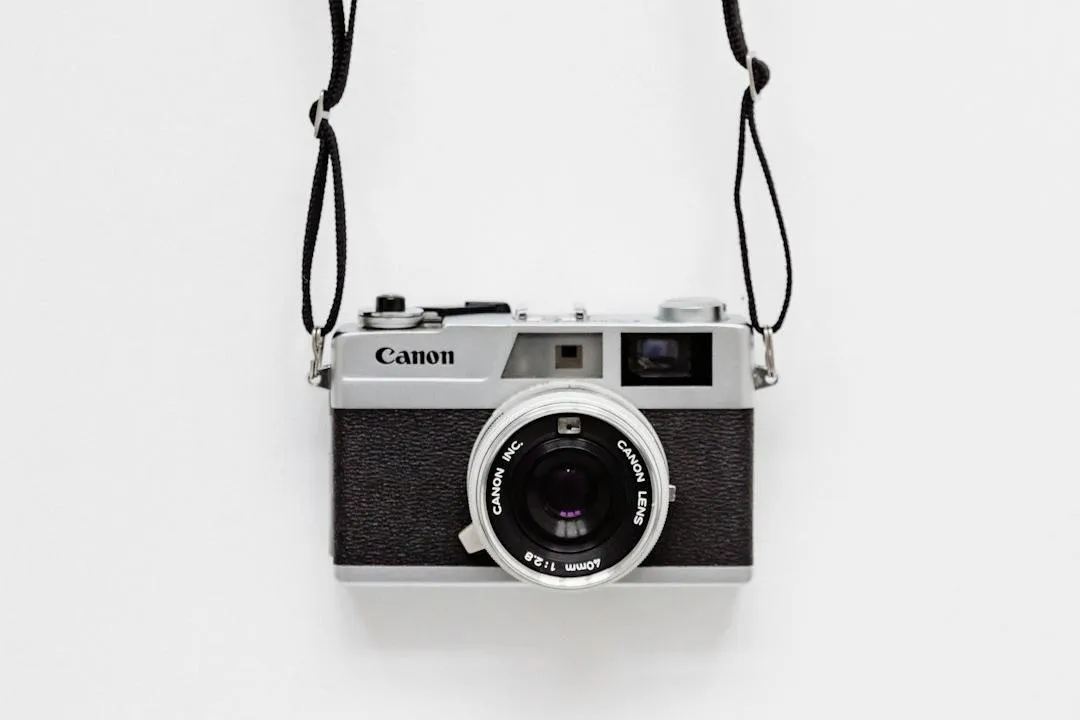
Choosing Your First Camera or Lens
So, you’ve decided it’s time to upgrade from your phone and step into the world of “real” photography.
Exciting! Also… a little overwhelming, right? If you've ever typed “best camera for beginners” into Google, you were probably met with 4,000 opinions and a few unfamiliar terms that made your eyes glaze over. But don’t worry—you don’t need a tech degree or a giant budget to get started. Whether you’re a mom or dad who wants to capture real-life moments more beautifully, a blogger wanting brand-worthy shots, or a creative exploring photography for fun, this post is your simple, no-fluff guide to picking your first camera or lens. Let’s take the guesswork out of it, shall we?
Step 1: Get Clear on Your Goals (This Changes Everything)
Before you even peek at camera models, ask yourself:
What kind of photos do I want to take most?
Everyday family life and kids?
Flat lays for your shop or blog?
Portraits of friends and clients?
Travel and landscapes?
A mix of everything?
Getting clear on how you want to shoot will help you make smarter decisions about what you need. For example, if you’re chasing toddlers around, you’ll want something quick and responsive. If you’re shooting products, sharpness and detail matter most.
Step 2: Camera Types—What’s What?
Let’s keep this simple. Here are the most common types of beginner-friendly cameras:
1. DSLR (Digital Single-Lens Reflex)
Pros: Great image quality, interchangeable lenses, lots of manual control.
Cons: Bigger, bulkier, not as modern as mirrorless.
Best For: Classic photography experience, especially portraits and lifestyle.
Beginner-friendly models to consider:
Canon Rebel T7 or T8i
Nikon D3500 or D5600
2. Mirrorless Cameras
Pros: Compact, lightweight, fast autofocus, live preview in real-time.
Cons: Slightly more expensive than entry-level DSLRs.
Best For: Bloggers, moms, travel lovers—anyone who wants quality and convenience.
Beginner-friendly models to consider:
Sony ZV-E10 or A6100
Canon EOS R50
Fujifilm X-T30 II
3. Point-and-Shoot (Compact)
Pros: Super portable, easy to use.
Cons: No interchangeable lenses, limited creative control.
Best For: Casual shooting or travel when you want simplicity over options.
If you know you want to learn and grow in photography, go for a DSLR or mirrorless. They’ll give you the most flexibility and room to improve.
Step 3: Don’t Sleep on the Lens
Here’s a secret: the lens matters just as much (if not more) than the camera body. The right lens can make your photos look professional—even if you’re still figuring things out.
A few great lens options for beginners:
The “Nifty Fifty” (50mm f/1.8)
Affordable, lightweight, and amazing for portraits and everyday shots.
Gives that beautiful blurred background look everyone loves.
Kit Lens (Usually 18-55mm)
Comes with many entry-level cameras.
Versatile, but not as sharp or dreamy as a prime lens.
Wide-Angle (24mm or 35mm)
Great for flat lays, interior shots, or storytelling scenes.
Pro Tip: If you're on a budget, consider buying the camera body and a 50mm lens separately instead of relying solely on the kit lens. That combo will seriously level up your photos.
Step 4: Consider Features That Actually Matter
Don’t get caught up in the specs jungle. Focus on what really matters:
✅ Wi-Fi or Bluetooth: So you can easily transfer images to your phone (you’ll thank me later).
✅ Touchscreen: Helpful for beginners and intuitive use.
✅ Flip screen: Especially great for vloggers or solo shooting.
✅ Autofocus system: You want it fast and reliable, especially for moving subjects.
✅ Manual mode availability: You’ll grow into it—promise!
Step 5: Let’s Talk Budget
Here’s the deal: you don’t need to drop $2,000 to take great photos. Solid beginner camera + lens combos can be found in the $500–$900 range. Look for bundles (often with memory cards and extras), check out reputable used gear stores like KEH or MPB, or even explore local buy/sell groups for gently used cameras. Whatever you choose, just make sure the gear is in good working condition and compatible with the lenses you want to grow into.
Final Thoughts: Don’t Overthink It
Your first camera isn’t your forever camera. You don’t have to get it perfect—just get started. Remember: what you do with the camera matters more than what camera you have. The best way to figure out what you really need is to start shooting. So, whether you choose a Canon, Sony, Nikon, or something else entirely—just promise me one thing: You’ll start creating. Because you have stories to tell. And now, you’ll have the tool to tell them beautifully.

